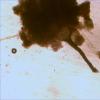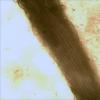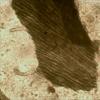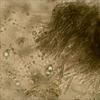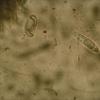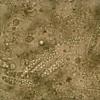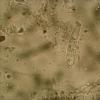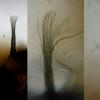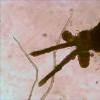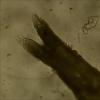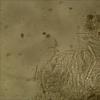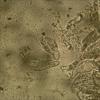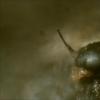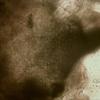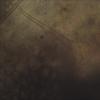
12-12-2025 18:39
Mirek GrycHello everyone.Macrofeatures similar to Mollisia b

09-12-2025 12:06
 Andgelo Mombert
Andgelo Mombert
Bonjour,Je recherche l'article concernant Hypobryo

07-12-2025 16:07
Arnold BüschlenHallo, ich habe in einer Moos-Aufsammlung (epiphy

08-12-2025 21:04
Mark Stevens"Hello everyone,I'm relatively new to microscopy (

08-12-2025 18:59
 Lothar Krieglsteiner
Lothar Krieglsteiner
.. found by a seminar-participant, I do not know t

08-12-2025 17:37
 Lothar Krieglsteiner
Lothar Krieglsteiner
20.6.25, on branch of Abies infected and thickened

Found on cow dung.
A different find than the one from 291112 which was on horse dung, but it is in the same area.
Cow dung is from Galloway cattle, the horse dung was from Iceland pony's.
Finding is confirmed by David Malloch.
The neck is covered by longitudinal hyphea, 293x25.5 um, the beak constist of the same clustered hyphea
The perithecia: 112.5 um in diameter.
No asci found yet, but the species are abundently present so I can wait till they are ripe enough.
Spore measurement 24.57x5.6 um on a single spore, containing one septa and oil drops. Immature spores filled with numerous small oil drops.

récolte correspond !
Michel.

The panel in the right of the photo show one sporidioma of K, calyculata. The function of these structures is unknown, but they seem to be a constant feature of species of Kathistes.
David

Very nice found, Joop!
We discussed it three years ago here:
www.ascofrance.fr/search_forum/22944
Norbert

"These collections, including the one of Michel at http://www.pilzforum.eu/board/thema-spumatoria-longicollis, seem very close to species of the genus Kathistes. The attached photos are of Kathistes calyculata, collected on moose dung in New Brunswick, Canada"
I've never heard about this species!!!
But it seems very closely to Spumatoria.
In 1990 you published this species in Can. J. Bot. 68(8).
It would be very great, if you would send a PDF to compare!
Thanks in advance.
Norbert

It's in your email.
Dave

Give me some minutes to compare! ;-)
Maybe tomorrow.
Norbert

Then I also have the PDF?
Thank you very much.
Michel.

Check your email.
Dave

Merci David.
Michel.

Regards
björn

In your email.
Dave

Here we have the asci.
The ascus has the shape of a waterbag like the one they use during a camel ride.
It has two extension of which one is extending in water, when young it only has one.
Containing 8 spores in 2 bundles of 4.
Young ascus: 58.6x21.2 um.
Mature ascus: 80x-29.5 um.
I also observed a perithecia with two necks and another one with a single neck and two beaks.

But interesting to know, that the genus Kathistes is simular to Spumatoria.
We'll do our best to find one or the other species of Kathistes in the future.
And be sure, when I find Spumatoria at the next time, I will send it to you for sequencing, Dave.
Norbert

Hello Norbert,
I already did send David about 10 species for sequensing today.
Joop


I have had success finding these fungi on dung of moose (Alces alces), but that is because it is the common large animal where I live. Other dung types are probably just as productive.
Species of Kathistes, Pyxidiophora and Sphaeronaemella are all long-necked ascomycetes common on moose dung. Probably on deer, cow and horse as well. The trick for finding them is to collect dung that is very fresh; probably on the ground only for a day or so. They must have have been visited by insects. Don't dry the dung, but put it directly in a moist chamber for incubation. Don't let it get too warm or Trichoderma will take over. Probably 15° to 18°C is best. Examine with a dissecting microscope at fairly high magnification. Pyxidiophora species will have prominent anamorphs that may offer a sign of their presence.
Good luck in your searches for these interesting ascomycetes!
Dave

Michel.

Hello David,
Good to know that the dung has to be very fresh. The chunck of cow dung was too fresh so I kept it in a plastic box covered by a transparant lit with a temperature between 16-18 deg. C., and no direct sunlight.
I checked it every two days for pyrenomycetes and the first fungi to appear after one week were Coprinus species mostly C. stercorius, it took 3 weeks before I discovered S. longicollis with 100+ species, together with different kinds of Podospora and Sporormiella species.
The Pyxidiophora basidiorostris and Pyxidiophora spec. I found were problably also produced on very fresh dung.

